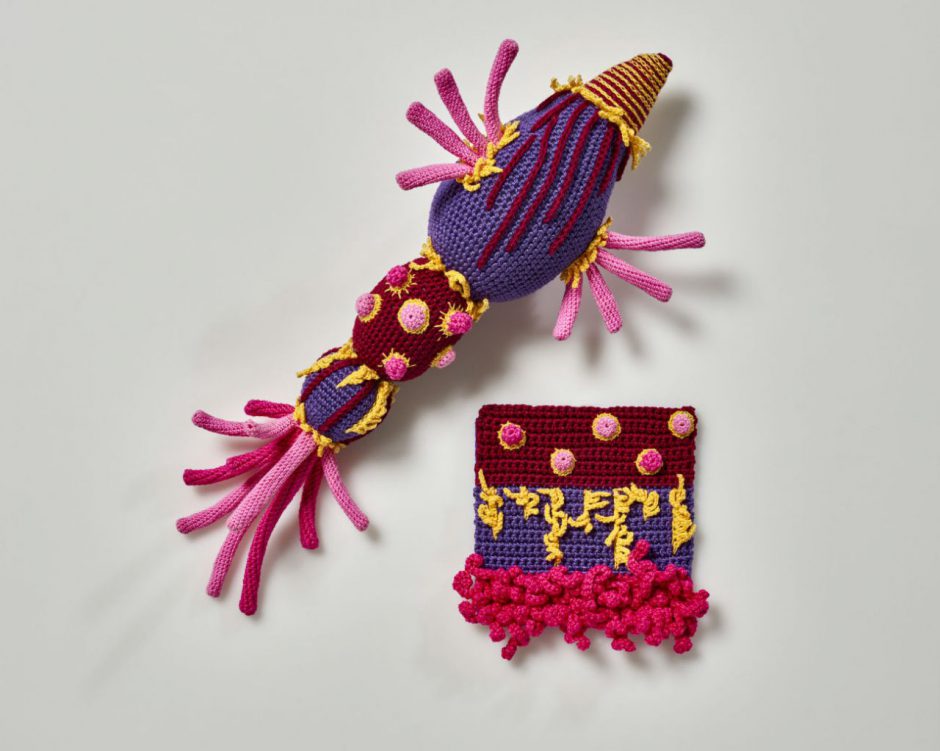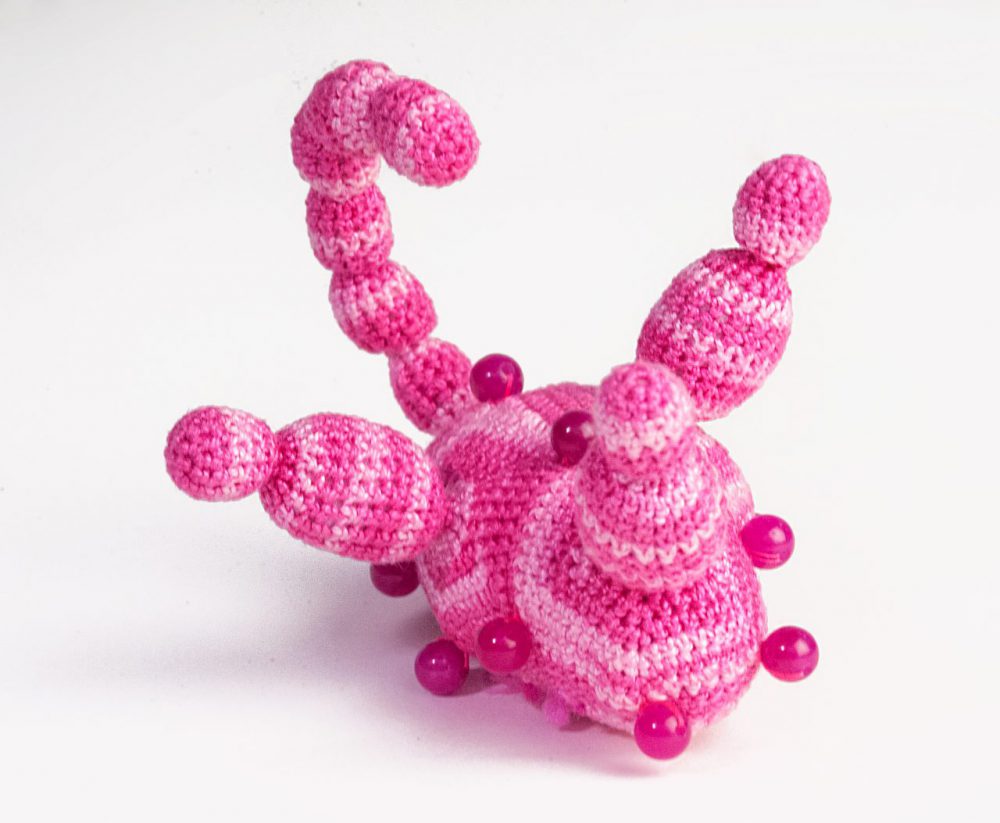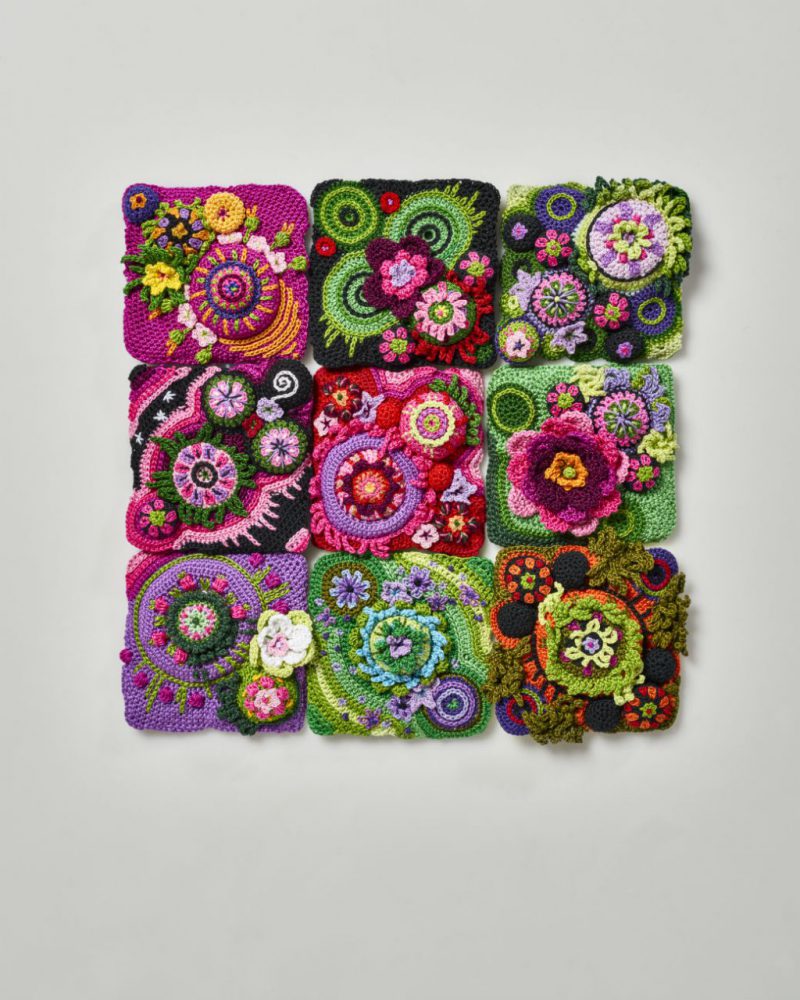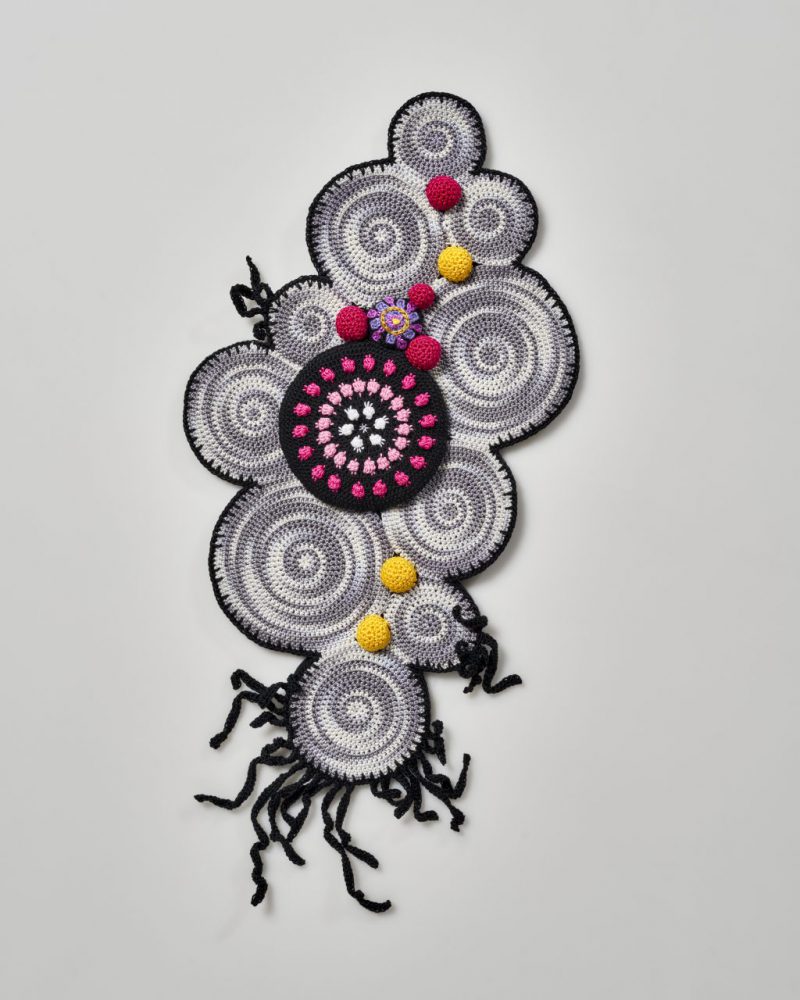
We spoke to textile artist Luisa De Santi, appearing at The Knitting & Stitching Show this year, about finding inspirations in nature, puppetry, her theatre background, and even yarn bombing. To see her incredible work yourself make sure you get tickets to The Knitting & Stitching show here.
Luisa, can you tell us a little about yourself and how you became a textile artist?
I started my "textile journey" as a little child and I've never stopped. Both my mother and my sister were into knitting and crocheting and my grandmother was a great expert knitter too! When I was a child it was something I did to look like an adult. In my teens it was a way to make something unique to wear. In my life as an adult it was a tool for a journey in my mind. So techniques, personal growth and research are going hand in hand.
Crochet is a major medium for your work. What is it about crochet that you enjoy working with?
In my life I have made a lot of different things. In the last 15 years, my focus has been on 3D creations, mostly made using crochet. I like my creations to be compact so they have to be stuffed and sometimes worked with overlapping. Crochet is the perfect technique for creating stiff elements that keep their shape.

What is your greatest source of inspiration?
I create 3D objects because life is a 3D experience. So I find my inspirations in my everyday life. I was born and live mainly in an amazing place in Italy, where nature is beautiful. The woods are full of nice natural vegetation. There is a kind of shrub (named sumac) whose leaves in autumn become burgundy, red, orange and fuchsia. There is a karst terrain with creeks in the sharp rocks, white surfaces, caves and waters full of incredible little creatures (like the proteus and crayfish).
In the undergrowth there are a lot of amazing insects and birds, soft moss and mushrooms.
A simple walk is an incredibly inspiring experience. On the seafront there is an amazing pebble beach, strangely shaped seaweeds and fish. I love flowers and fruits too, so I enjoy places like greenhouses, flowers markets and gardens, but also candy shops, button shops and flea markets.
Has your career working in the theatre been an influence on your art?
Training in puppet theatre offered me the opportunity to learn a way to explore an incredible world of expressive possibilities. Puppet theatre is much more than a way to tell a story: starting from an abstract idea, puppetry can elaborate on emotions in an abstract language and in an abstract 3d space. Puppetry is a fantastic world where everything is possible and it has been a big influence on my way of thinking.
About 20 years ago, starting from puppets, I explored the infinite three-dimensional possibilities offered by crochet and knitting solutions to express emotions and feelings. The fact that it seemed possible to make almost anything starting from a thread felt absolutely magical to me. So experimenting with threads became a sort of obsession and it allowed me to learn the different techniques needed to use the yarns like a language.

You famously work without plans or sketches. How do you decide where a piece of work starts or begins, and how long typically does it take you to make a piece of work?
I prefer to use thin yarns and love embroidery to create little details. My works have a modular structure: every unit is made as a single item, and it comes to life when attached to the others. I make a lot of small units full of details. I don't know how to explain ... my work is based on experimenting and takes a lot of time.
What can visitors to The Knitting & Stitching Show expect from your exhibition, Magical Crochet Spells?
I hope that they can leave for some moments their reality and visit mine. I don't want to give specific messages except the fact that reality can have different forms and faces. I hope that they can enjoy a little vacation on another planet and come back with a feeling of happiness. I'd like to use this wonderful opportunity to promote crochet and knit like art languages.

Do you think that textile art (and textile artists) are taken as seriously as other forms of art/artists?
Unfortunately, no. Fibre art isn't much represented in the artistic scenario. Usually women use fibre and mixed media. On the other hand, well known artists use fibre art techniques without calling themselves fibre artists ... why? I have often reflected on this topic: Isn't fibre art interesting or good enough? Is it a gender identity problem? Simple lack of target?
Basically and simply I think that even today, and too often, craft techniques aren't considered an artistic language, but just ornamental elements. It seems to me that fibre art is the “Cinderella” of arts and, I hate to say, hand knitting, crochet and weaving culture is the Cinderella of fibre art. Fibre artists have the responsibility of the future.
You are a celebrated yarn bomber. Is craft activism important to you and what causes do you support through it?
Basically I think that yarn bombing is the most powerful type of public statement (like every sort of public art) and it has to be free for everybody to open minds and hearts. It's very important to me. I support charity projects and projects to raise awareness of human and animal rights.
Luisa De Santi’s exhibition, Magical Crochet Spells, is at The Knitting & Stitching Show London at Alexandra Palace from 10th-13th October 2019
Keep up to date with your favourite artists, priority bookings and exclusive offers from See Tickets:
Comments are closed.